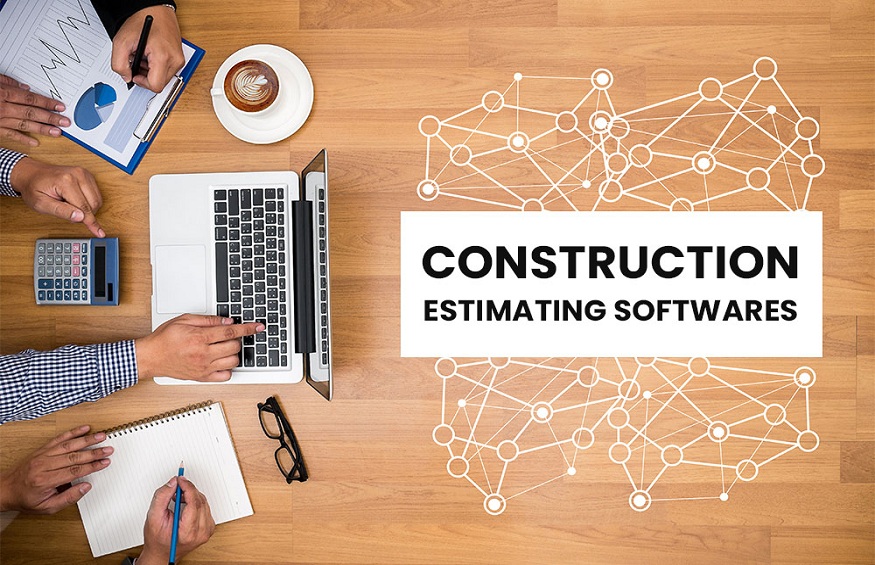10 Key Features to Look for in Construction Estimating Software
Whether you’re a seasoned contractor or a newcomer, investing in the right construction estimating software can make all the difference. It can streamline your bidding process, save time, reduce errors, and ultimately lead to more profitable projects. In this blog, we will explore the ten key features to look for when choosing construction estimating software, focusing on keywords like “Construction Estimating Software” and “Construction Bidding Software.”
1.User-Friendly Interface
A user-friendly interface ensures your team can quickly adapt to the software. Look for software with an intuitive design and navigation so that your estimators can efficiently perform takeoffs and create estimates. An easy-to-use interface reduces the learning curve and enhances productivity, as your team can focus on the task rather than struggle with complex software.
2. Digital Blueprint Integration
The ability to import and work with digital blueprints or drawings is crucial. It streamlines the takeoff process by allowing estimators to measure and mark up plans directly within the software. Digital blueprint integration eliminates the need for manual measurements, reducing the risk of errors and saving significant amounts of time. It also enables real-time updates, ensuring that estimations are always based on the most current project data, which is especially critical in the fast-evolving construction environment.
3. Accurate Quantity Measurement
Precise quantity measurement is the cornerstone of accurate estimates. The software should provide tools for measuring lengths, areas, volumes, and quantities accurately, reducing the risk of errors. Accurate quantity measurement ensures that your estimates are on point and helps optimize material orders, reduce waste, and ultimately save costs. It’s a fundamental feature that can significantly impact the profitability of your projects.
4. Integration with Cost Databases
Efficient construction estimating software should integrate seamlessly with cost databases. This feature allows you to access up-to-date materials, labor, and equipment pricing, ensuring that your estimates reflect current market rates. Integration with cost databases eliminates the need for manual research and data entry, saving you time and providing confidence that your estimates are based on accurate and current cost data.
5. Real-Time Collaboration
In a team-oriented industry like construction, collaboration is key. Look for software facilitating real-time collaboration among estimators, project managers, and other stakeholders. This ensures that everyone is on the same page throughout the estimating process. Real-time collaboration features can include instant messaging, shared project files, and the ability to work on estimates simultaneously, even if team members are in different locations. This collaborative approach enhances communication, reduces misunderstandings, and leads to more accurate and efficient estimates.
6. Cost Breakdowns
A comprehensive cost breakdown feature helps you create detailed estimates that clearly show where project costs are allocated. This transparency is invaluable for both you and your clients. Cost breakdowns allow you to present estimates with line-item details, showing the cost of materials, labor, equipment, subcontractors, and other expenses. This level of detail instills confidence in your clients and helps you manage costs effectively by identifying areas where adjustments can be made to stay within budget.
7. Reporting and Analysis
Construction estimating software should offer robust reporting and analysis capabilities. This allows you to generate detailed reports, project timelines, and cost breakdowns, helping you make informed decisions and communicate effectively with clients. Reporting tools enable you to create professional and comprehensive estimates that can be easily shared with stakeholders. Additionally, analysis features can help you assess the feasibility of a project, identify potential risks, and make data-driven decisions to optimize your estimating process.
8. Scalability
Construction projects vary in size and complexity. The software you choose should be scalable, capable of handling small residential projects and large-scale commercial endeavors. Scalability ensures that your estimating software can grow with your business, allowing you to take on projects of varying scopes and sizes without switching to different software. This flexibility is particularly important if you plan to expand your operations or take on a broader range of construction projects.
9. Cloud-Based Accessibility
Cloud-based construction estimating software offers the advantage of accessibility from anywhere with an internet connection. This flexibility allows your team to work remotely and access project data on-site. Whether in the office, on the construction site, or traveling, cloud-based accessibility ensures that your estimating software is always within reach. This feature enhances collaboration, as team members can access and update estimates in real-time, even in different locations. It also provides the convenience of accessing project data from various devices, including laptops, tablets, and smartphones.
10. Integration with Accounting Software
Seamless integration with accounting software simplifies transitioning from estimating to project management and financial tracking. Look for software that can integrate with popular accounting systems to streamline your workflow. Integration with accounting software ensures that your estimates seamlessly flow into your financial management processes. This saves time by eliminating the need for manual data entry and helps maintain consistency and accuracy between your estimates and financial records. It provides a smooth transition from the estimation phase to project management and financial tracking, allowing for better cost control and transparency.
Conclusion and Call to Action
Selecting the right construction estimating software is a crucial decision for your business. Your chosen software should enhance your estimating accuracy, improve project communication, and ultimately contribute to your bottom line.
McCormick Systems offers comprehensive construction estimating software solutions encompassing these key features. Their expertise in construction bidding software can empower your team to create precise estimates, streamline your workflow, and stay competitive in the construction industry.

